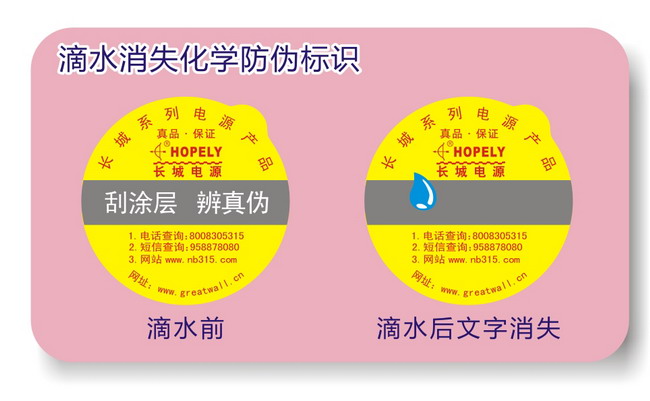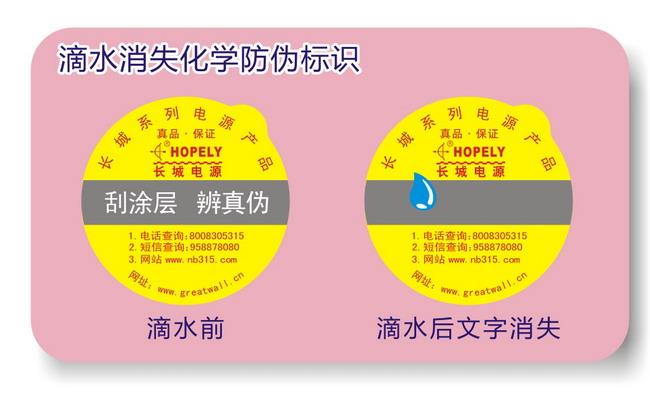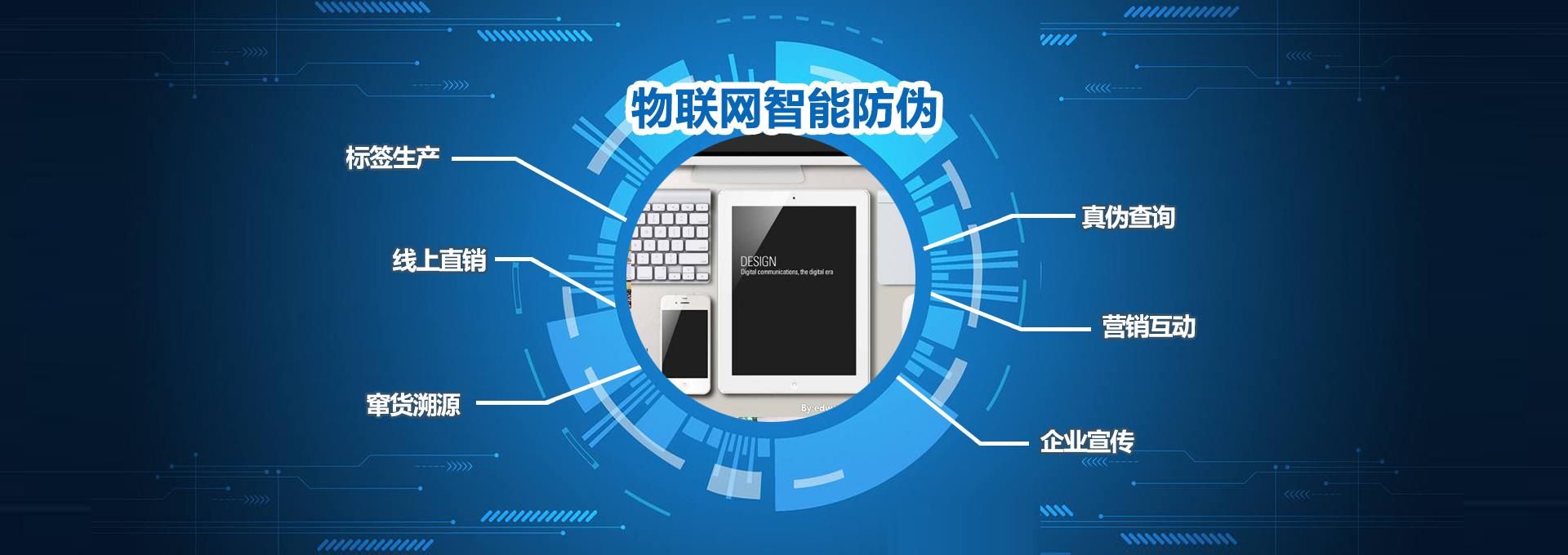Shenzhen City Industrial Co., Ltd. Contact: Liu Jinrong Fixed: 075529966071
Mobile: 13510810460
Fax: 075529966073
Address: 5th Floor, Building 3, Guangyu Industrial Park, Xixiang Street, Baoan District, Shenzhen

Chemical anti-counterfeit labels include laser marking and paper marking

First, the paste of chemical anti-counterfeiting labels
1, paste the use of the package
A. When extracting the mark from the release paper, fold the whole piece mark along the line spacing of the mark so that the mark is lifted from the release paper to the vicinity of the middle of the mark.
B. When picking the mark by hand, the contact area between the hand and the marking primer should not be too large and the force of the pinching should be slight (the fragile mark should be lighter when it is pinched) so as not to damage the sub-layer of the mark and the viscosity of the glue. When extracting the logo, you should follow the normal method of uncovering, and you must not forcibly pull it, and the speed should not be too fast. Too fast and easy to pull the logo, rigorously fasten the chemical anti-counterfeit label directly from the adhesive paper.
C. When attaching the chemical anti-counterfeit label, firstly, the surface of the object to be attached should be cleaned, and dust, oil and water stains are prohibited from adhering to the object to be attached, causing the chemical anti-counterfeit label and the attached object to be stuck weakly, and the curling, falling off, etc. phenomenon.
D. When the label is pasted to the object to be attached, the chemical anti-counterfeit label is flattened and the periphery is not warped, so that the chemical anti-counterfeit label is bent and bonded to the surface of the object to be attached.
2, the use of the tape label paste
A. Please carefully clean the identification light on the labeling machine before using the logo to prevent the fine foreign matter from being attracted to the light eye and causing the label to be unsuitable.
B. Before and after using the automatic labeling machine, the transfer belt on the labeling machine and the adsorbed material on the conveying roller should be cleaned before and after, so as not to affect the labeling effect.
C. Adjust the pressure of the pressure roller after labeling to ensure that the chemical anti-counterfeit label can be flattened evenly and forcefully after the label is pasted to the object to be attached, so that the chemical anti-counterfeit label and the surface of the object to be attached are completely adhered.
Second, the opening of chemical anti-counterfeiting labels / scraping / information reading
A. When the one-time destructive chemical anti-counterfeit label is unveiled, the finger is lifted along a part of the edge of the logo, the finger is pinched to the exposed part, and then the force is torn off, and the sub-layer part remains on the surface of the object to be attached. The flatness of the logo is destroyed and cannot be reused.
B. When uncovering the laser holographic anti-counterfeit label, you should first confirm the prompt language of the surface pattern, and then press the prompt to reveal it from the correct position. Gently lift the edge of the logo surface with your fingernails, pinch the exposed part, and then slowly uncover it (do not use too much force to prevent damage to the bottom layer). The bottom layer is left on the object to be attached, the bottom layer or the back of the surface. The digital should be complete and easily identifiable.
C. Scratch-open chemical anti-counterfeit label. When scratching the covered ink, first tentatively scrape it, and then determine the force. Do not use too much force at the beginning to damage the information under the ink, such as when the individual mark covers the ink and it is difficult to scratch. It can be immersed in water a little, and then scraped off in half an hour.
D. Barcode and QR code identification should ensure that the configuration of the scanning facility matches the barcode and QR code on the label. If the configuration or configuration of the scanning facility does not match, it will affect the reading speed and even the inability to read. Care should be taken to properly adjust the distance, angle and brightness of the ambient light.
Third, chemical anti-counterfeit label considerations
A. If the digital holographic anti-counterfeit label cannot be queried due to various reasons, other anti-counterfeiting technologies for the marking surface can be used for authenticity identification of the consumer.
B. If you want to verify the paste effect of the chemical anti-counterfeit label, you must post it for 24 hours before revealing it.
C. The chemical anti-counterfeiting label shall be affixed to the object to be attached within 6 months from the date of production. When the chemical anti-counterfeit label is attached, it should be protected from sun, moisture and high temperature when stored. It should not be mixed with chemical contaminants.
D. The storage environment should be well ventilated, dry, and the temperature should not exceed 30 ° C above the high temperature environment to paste chemical anti-counterfeiting labels.
E. Taboo Chemical anti-counterfeiting labels are attached at low temperatures below 10 °C and high temperatures above 30 °C.
F. It is strictly forbidden to shake the whole piece of the mark in the air to prevent the mark from falling off the release paper.
G. The label after unpacking or unsealing should be sealed as much as possible to avoid exposure and illumination in the air for a long time. Otherwise, the label may be curled, discolored, and the adhesive may be issued, which may affect the use.



